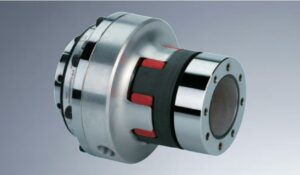 When Coupling Tips.com spoke with KTR Engineering Services Manager, Chris Scholz we asked him about some of the common misconceptions about torque limiters and their applications. Scholz specifically mentioned clutches being brought up in torque limiter inquiries when he fields application questions. Here is what he had to say about approaching torque limiter specification for a motion system design.
When Coupling Tips.com spoke with KTR Engineering Services Manager, Chris Scholz we asked him about some of the common misconceptions about torque limiters and their applications. Scholz specifically mentioned clutches being brought up in torque limiter inquiries when he fields application questions. Here is what he had to say about approaching torque limiter specification for a motion system design.
“One of the things that I try to understand first, is whether or not the torque limiter will be used only for catastrophic failure, or if the customer is looking to slip frequently: are they expecting more slips than usual? That, then, tells me whether I want to use an economical friction style torque limiter, or if I want to use the ball detent designs, where they can slip, catch a limit switch, shut off, and then reset themselves, and begin operating again. They typically can be slipped multiple times through their application, where a friction torque limiter has to be reset every time.
I also try to determine whether a zero backlash component is needed, and address other typical industry questions. The biggest misconception that I want to make sure that people understand that a torque limiter is not a clutch, and therefore they’re not intended to be continuously slipped.
They generate a lot of heat, obviously, with those frictional connections, and so once a torque limiter slips we want the system to be shut down as soon as possible. We obviously then want to inspect that torque limiter, and check for any wear, or heat damage. Re-checking the setting torque is also important, it’ll decrease quite a bit if it’s been run too long. We want to make sure that we’re still in the range that we need to be in so we’re not slipping more and more. The way we do that is either with a limit switch, or a proximity switch, and some type of control device. That way when the torque limiter slips, it sends a signal, and shuts the system down so the customer can do whatever it is the torque limiter was designed to catch, or do.”
KTR
www.ktr.com/us
Leave a Reply